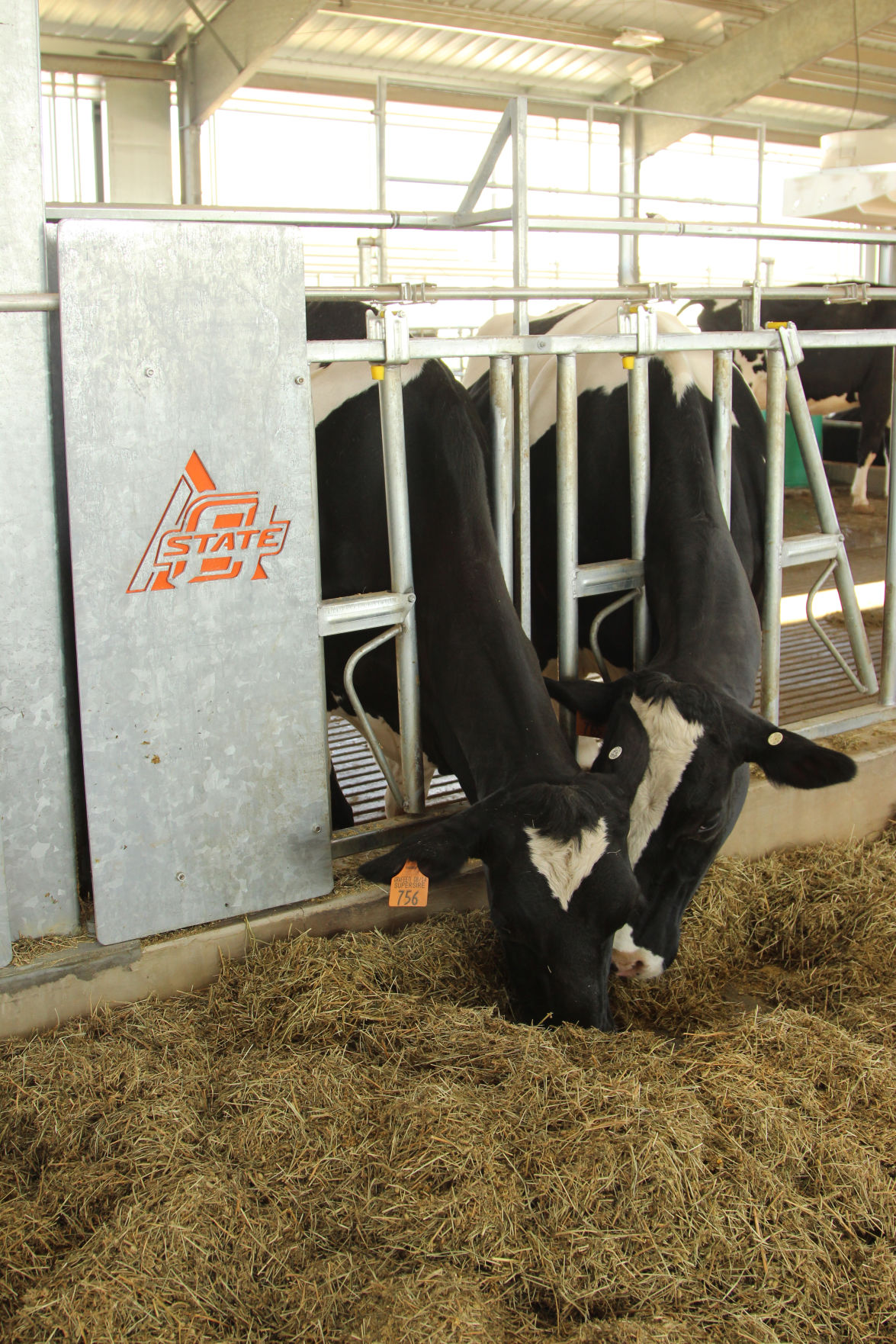How does the saying go? “Great cheese comes from happy cows.” Well, cheese starts with milk and the cows at Oklahoma State University’s Ferguson Family Dairy Center will be happier this summer. The dairy includes three hundred acres and houses 100 registered Holsteins and Jersey cattle that now have a new free stall barn to help beat the Oklahoma heat.
Better ventilation
David Jones, herd manager at the Center, joked that the old barns—which dated to the 1940s—were “easy bake ovens” because of their poor ventilation.
“Those didn’t have proper ventilation at all, and we know going into our new free stall barn that we’ll get better conception during the summer as well as higher production,” Jones said. “We think we’ll have overall better health of our cattle.”
Clint Rusk, head of the animal science department at OSU, hopes the same and said in Oklahoma, there’s a need to try to improve milk production and cow comfort, particularly during summer months.
“In Wisconsin and northern states, they try to keep their cows warm in the wintertime,” he said. “In Oklahoma we have to worry about keeping them cool.”
The most challenging time is July and August when temperatures can easily exceed 100 degrees for long periods of time, which hinders milk production. The dairy needed a way to improve cow comfort, reduce temperatures in the barn to hopefully improve milk production.
“Our hope is it’ll improve milk production, but also improve reproductive performance because that tends to drop off when it gets extremely hot as well,” Rusk said.
The new free stall barn at the dairy center has fans and misting systems to keep the cattle cool. Fans circulate air over the cows’ shoulders and on each side of their head when in the feed lanes. Overhead fans blow down in the maternity and transition areas too.
“Between that and our curtains that roll up and down we really tried to address heat abatement,” Jones said.
To go with the ventilation systems, tracking devices paired with the feeders can monitor feed and water consumption while recording weights. Scales are strategically placed throughout the facility.
“They’ll walk across a set of digital scales so we will have their body weight every day, and feed consumption, water consumption and milk production,” Jones said. “We feel like these Insentec feeders are going to put us at the forefront of being able to do research.”
Better footing
Jones was adamant about the footing in the barn to ensure safety of the animals.
“That was one issue that I wanted to make sure that we did it right,” Jones said.
There are grooves in the concrete every 3 inches within the flush lanes, while the walking areas around the waterers have square slots in the concrete. This helps the cattle walking or turning to have good footing no matter what.
“We feel like we’ve done a very good job,” Jones said. “We are not having any slipping at all and we’re certainly catching more cows in standing heat now that they’ve got better footing than they used to have.”
Inside the milking parlor, the milking system’s new software can get a seven-day average milk weight and collect data for research projects.
Sign up for HPJ Insights
Our weekly newsletter delivers the latest news straight to your inbox including breaking news, our exclusive columns and much more.
“We’ll record a speck of blood or any abnormality in the milk,” he said. “Probably one of the neat things is that there’s no mechanical device that weighs the milk. It’s measured by laser.”
Student workers
Students can get involved in undergraduate research at the dairy center, while others who go on to graduate school often end up doing research at the facility as a masters or Ph.D. student.
“We’re just excited about the facility and all the things that it’s going to help as far as our cows milk production, our student’s opportunities and it’s already having an impact on recruiting,” Rusk said. Twelve students handle the majority of the chores—both morning and evening. Jones and his assistant manager work with the students to ensure proper procedure, but students handle just about every aspect of running the dairy.
“They milk the cows, they feed the baby calves, they give shots, they help with preg checking,” Jones said. “Literally any job on the dairy they do it.”
A special thing
The additions to the dairy center were made possible by a donation by Larry and Kayleen Ferguson, who met while working at the OSU Dairy Center in 1975. Larry, an OSU alumnus, is the former president and CEO of Schreiber Foods.
“The dairy industry is in my blood,” Larry Ferguson said at the grand opening event April 5. “I grew up on a dairy farm and dairies have been in my family all my life. It’s a special thing.”
Kayleen’s parents, Kenneth and Kathleen, also attended OSU and worked at the center. The updated student housing was named Helms Hall in their honor.
The future of dairy in Oklahoma
Jones feels like training dairy students in Oklahoma is necessary.
“One, we really feel like that it’s needed in the southwest area because now it’s basically us and K-State are the only ones that still even have a dairy,” he said.
Even with the closures of smaller dairies, Jones sees a need for managers at the large dairies.
“Today, not every one’s going to go home to the small family farm, but we have a huge demand of calls of needing students that can go out and manage dairies,” he said. “That’s what we’re hoping to expose them to—as much research as we can, but let them know how to milk in a herringbone barn versus robots so that they can go out into the industry.”
Kylene Scott can be reached at [email protected] or 620-227-1804.




